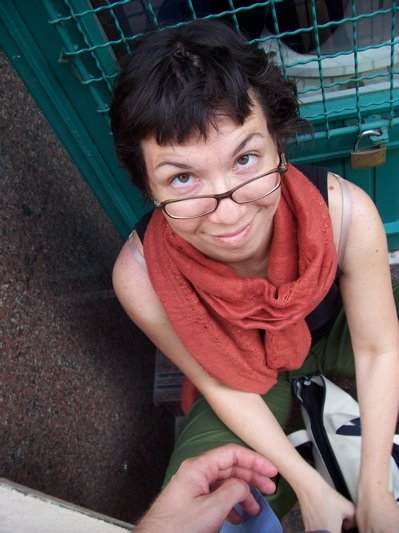
Post Prelude:
I love carnival. I love the idea of a time when all life’s normal rules are suspended: a vacation from order, from responsibility, from accountability, from moderation.
We spent this carnival in Mohács, Hungary, home of the Busojárás carnival. Busojárás originally came here with the Slavic Sokacs people, and has roots in ancient Slavic paganism. But unlike other Slavic carnivals, Busojárás does not feature animal masks. Here and only here the masks (“busos”) are humans with horns, wooly hair all over, and no self-control.
Do a Little Dance, Make a Little Love, Get Down Tonight
The busos are an embodiment of life-force, of spring, of fertility. So they’re given free reign to grab any girl—or guy, or buso—and hug them, grab them, try to kiss them, etc. You often see them come up on either side of some dishy girl and grind on her while their cow-bells clang. It sounds creepy but it’s totally charming; never aggressive, and always welcome. They steer clear of girls who look cranky, and aren’t above grabbing guys or grandmothers either.



Of course music and dance are part and parcel of the festival. Everyone dances the kolo, a Sokacs circle dance. These musicians—apparently Mohács’ most in-demand—were at every carnival event we went to.

The guy on the extreme right proposed to me after I managed to pick out the “super-duper” kolo on his guitar.

Once only Sokacs men could be Busos. That rule was forgotten long ago; today everyone in the city wants to be a Buso. There are tons of masked kids—to the dismay of those who take the buso tradition seriously and see it as a rite of passage for young men. I even saw a couple girls and one old woman suited up as Busos.


Other Troublemakers
Other girls have their own traditional costumes and their own masks—and almost as much freedom as Busos. One girl pointed her cane straight at Rick’s crotch and chased him!

Boys who would rather chase girls than kiss them have another costume; the jankele. Jankeles dress up in rags and chase men and women around the streets with flour-filled socks. Apparently this figure is based on a real person, a famously cranky Jewish leather merchant who lived in Mohács during the 19th century.

Carnival Time
On the big tourist day, Carnival Sunday, Busos parade from Kolo Square to the main square by the church. There’s the sinking of the Carnival coffin and a bonfire at night, where a strawman is burned on top of the giant bonfire. Busos and locals and tourists join hands to dance kolo in a circle around the fire.

By Carnival Monday, the tourists are long gone. We spent the morning with maskmaker Englebert Antal (more on him later) and the afternoon following a group of busos as they went door to door in Kolo Ter. Once, Busos used a plow a bit of a farmer’s field and bury a bit of cinder for a good crop. Then they headed to the stable and hit the farmer’s animals to “protect them from illness.” None of the houses in Kolo Ter have animals or fields anymore, but the door-to-door tradition was recently revived. At each house where they stopped, the busos were offered hot wine, palinka, homemade donuts, cookies and other sweets. The busos danced kolo.

Sometimes they plowed a little bit, sometimes they horsed around and destroyed the lawn furniture.



Carnival Tuesday is strictly for locals.

The whole town turns out—this time with 90% less tourists and 250% more booze. The busos show off for each other, not the cameras.

The guys from Boros Kolo had reached their apex of goodwill towards man. Here’s what happened when they played the old “try this garlic-chili pepper palinka” trick on Rick.



We wanted to stay for the final bonfire, the burning of the carnival coffin, the official end of winter—but our bus left just as the fire was lit. I slept exhausted as we drove the frozen backroads back to Budapest, dreaming of spring spreading silently over the dark fields.


No comments:
Post a Comment